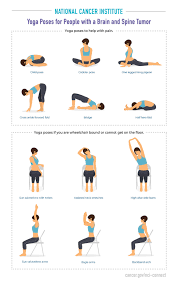Best yoga for brain health taking care of our mental health has become just as important as looking after our physical well-being. While many focus on exercise, diet, and sleep, yoga offers a unique and highly effective approach to enhancing brain health. This ancient practice not only improves flexibility, strength, and balance but also has profound benefits for the mind. Research shows that yoga can enhance cognitive function, reduce stress, improve focus, and increase overall mental clarity. Let’s explore the best yoga practices to boost brain health and mental wellness.
Why Yoga for Brain Health?
Best yoga for brain health is much more than a physical exercise; it’s a mind-body connection that helps promote relaxation and mindfulness. The combination of physical movement, controlled breathing, and meditation enhances neural connections, encourages better blood flow to the brain, and reduces the impact of stress on the nervous system. Regular yoga practice can improve memory, focus, and emotional regulation, making it an essential tool for enhancing cognitive health.
Top Yoga Poses for Brain Health
Here are some of the best yoga poses that can help improve brain function and mental well-being:
1. Downward-Facing Dog (Adho Mukha Svanasana)
- Benefits for Brain Health: This classic pose promotes blood flow to the brain, helping to increase mental clarity and focus. It also helps relieve tension and stress, which can negatively impact brain function.
- How to Do It: Begin on your hands and knees, with your wrists aligned under your shoulders and knees under your hips. Lift your hips toward the sky, straighten your legs, and press your heels toward the floor. Let your head hang freely between your arms. Hold for several breaths, focusing on your breathing.
2. Tree Pose (Vrksasana)
- Benefits for Brain Health: Tree pose requires balance and concentration, which helps strengthen cognitive focus. This pose also stimulates the parasympathetic nervous system, reducing stress and anxiety.
- How to Do It: Stand tall with your feet hip-width apart. Shift your weight to one leg and place the sole of the opposite foot on your inner thigh or calf (avoid the knee). Bring your palms together at your chest or extend them overhead. Hold for 5–10 breaths and switch sides.
3. Warrior III (Virabhadrasana III)
- Benefits for Brain Health: This balancing pose requires mental focus, coordination, and strength. It engages the core, improves posture, and enhances brain function by stimulating the nervous system.
- How to Do It: Begin in a standing position and shift your weight onto one leg. Hinge at the hips, extending your other leg straight behind you while lowering your chest toward the floor. Keep your arms extended forward or at your sides. Hold for a few breaths and then switch sides.
4. Child’s Pose (Balasana)
- Benefits for Brain Health: Child’s pose is a restorative pose that helps calm the mind, reduce stress, and encourage deep relaxation. This pose activates the parasympathetic nervous system, aiding in the recovery and maintenance of brain health.
- How to Do It: Start in a kneeling position and fold forward, resting your forehead on the mat. Stretch your arms forward or place them at your sides. Breathe deeply, letting go of any tension or racing thoughts.
5. Seated Forward Fold (Paschimottanasana)
- Benefits for Brain Health: This forward bend increases blood flow to the brain and helps relieve stress and anxiety. It also promotes mental clarity and focus by calming the mind and stretching the spine.
- How to Do It: Sit with your legs extended in front of you. Inhale to lengthen your spine, then exhale as you fold forward, reaching for your feet. If you can’t reach your feet, just let your hands rest on your legs. Hold for several deep breaths.
6. Bridge Pose (Setu Bandhasana)
- Benefits for Brain Health: Bridge pose helps increase blood circulation to the brain, improving cognitive function and memory. It also stimulates the thyroid, which plays a key role in mental clarity and mood regulation.
- How to Do It: Lie on your back with your knees bent and feet flat on the mat. Press through your heels and lift your hips toward the sky, squeezing your glutes. Keep your shoulders and arms on the mat, and hold the position for 5–10 breaths.
7. Lion’s Breath (Simhasana)
- Benefits for Brain Health: Lion’s Breath is a powerful pranayama (breathing technique) that helps release pent-up stress, anxiety, and tension. It stimulates the vagus nerve, which is linked to improved brain function, and helps increase mental clarity.
- How to Do It: Sit in a comfortable position with your knees bent. Inhale deeply through your nose, and then open your mouth wide, sticking out your tongue and exhaling forcefully with a “ha” sound. Repeat for 5–10 rounds.
8. Legs-Up-The-Wall Pose (Viparita Karani)
- Benefits for Brain Health: This restorative pose promotes relaxation and helps rejuvenate the brain by improving circulation. It can reduce mental fatigue and lower anxiety levels, allowing for better cognitive functioning.
- How to Do It: Lie on your back with your legs extended up against a wall. Keep your arms relaxed at your sides and breathe deeply. Hold for 5–15 minutes for maximum relaxation.
9. Headstand (Sirsasana)
- Benefits for Brain Health: Headstand is often called the “king of yoga poses” due to its ability to improve circulation to the brain, increase mental clarity, and reduce stress. This inversion pose helps with focus, concentration, and cognitive function.
- How to Do It: Start on your hands and knees, interlace your fingers to form a base. Place the top of your head on the mat, and slowly lift your legs toward the sky. Engage your core and stay steady, focusing on your breath. Note: Headstand should only be attempted by experienced practitioners.
10. Savasana (Corpse Pose)
- Benefits for Brain Health: Savasana is the ultimate relaxation pose and is essential for integrating the benefits of your yoga practice. It helps calm the mind, promote mental clarity, and reduce the impact of stress on brain function.
- How to Do It: Lie flat on your back with your arms at your sides and palms facing upward. Close your eyes, focus on your breath, and let go of any lingering tension or thoughts. Stay in the pose for at least 5–10 minutes to fully relax your mind and body.
The Power of Breathwork in Yoga
In addition to the physical postures, the pranayama (breathing) techniques practiced in yoga are incredibly beneficial for brain health. Deep, controlled breathing increases oxygen flow to the brain, reduces stress hormones, and can improve focus and cognitive function. Some effective breathing practices include:
- Alternate Nostril Breathing (Nadi Shodhana): This pranayama helps balance the left and right hemispheres of the brain, promoting mental clarity and focus.
- Kapalbhati (Skull Shining Breath): This rapid, forceful exhalation technique increases brain circulation and can help clear mental fog.
Conclusion
Best yoga for brain health offers a wealth of benefits for brain health, from improving cognitive function and memory to reducing stress and anxiety. By incorporating these yoga poses and breathwork into your daily routine, you can experience improved mental clarity, better focus, and a more balanced state of mind. Whether you’re seeking to reduce brain fog, improve your concentration, or simply enhance your overall mental well-being, yoga is a powerful tool that can help you achieve a healthy, sharp mind.
Start incorporating these poses into your routine today and feel the difference in your brain health over time.



